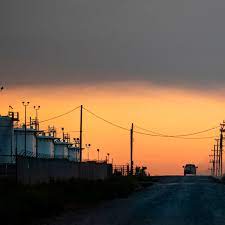In the realm of data interchange formats, YAML (YAML Ain’t Markup Language) and JSON (JavaScript Object Notation) stand out as two of the most prevalent choices. While both are human-readable and widely supported across programming languages, they possess distinct syntaxes and structures. Occasionally, there arises a need to convert data between these formats, often for compatibility reasons or when dealing with systems that require a specific format. In this article, we’ll explore the process of converting YAML to JSON and how it can be accomplished efficiently.
Table of Contents
ToggleUnderstanding YAML and JSON
Before delving into conversion techniques, it’s crucial to understand the fundamental differences between YAML and JSON.
YAML
YAML is a human-readable data serialization format.
It uses indentation to represent data structures and supports complex data types like lists, dictionaries, and nested structures.
YAML focuses on readability and ease of use, allowing developers to write data in a clear and concise manner.
JSON
JSON is a lightweight data interchange format inspired by JavaScript object literals.
It utilizes key-value pairs to represent data structures and supports basic data types such as strings, numbers, booleans, arrays, and objects.
JSON is widely used for transmitting data between a server and a web application due to its simplicity and compatibility with JavaScript.
Converting YAML to JSON
Several methods exist for converting YAML to JSON, ranging from manual conversion to automated tools. Here are some common approaches.
Manual Conversion
For small YAML datasets, manual conversion can be straightforward. Developers can manually rewrite the YAML data into JSON format, adhering to JSON syntax rules. While this method is feasible for simple cases, it becomes cumbersome and error-prone for larger datasets.
Using Programming Libraries
Various programming languages offer libraries for parsing YAML and serializing JSON. For instance, Python’s yaml and json modules provide functions for loading YAML data and dumping it into JSON format, respectively. Similarly, JavaScript has libraries like js-yaml and json5 for handling YAML and JSON conversions.
Online Converters
Numerous online tools and converters are available for quickly converting YAML to JSON. These web-based converters allow users to upload YAML files or input YAML text directly and receive the corresponding JSON output. While convenient, users should exercise caution when dealing with sensitive data, as online converters may pose security risks.
Converting YAML to JSON in Python
Let’s illustrate the conversion process using Python’s pyyaml library
import yaml
import json
# Sample YAML data
yaml_data = """
name: John Doe
age: 30
city: New York
"""
# Load YAML and convert to JSON
json_data = json.dumps(yaml.safe_load(yaml_data), indent=2)
print(json_data)
In this example, the yaml.safe_load() function parses the YAML data into a Python dictionary, which is then serialized into JSON format using json.dumps().
Conclusion
Converting data between YAML and JSON formats is a common task in software development, especially when dealing with diverse systems and applications. While manual conversion is feasible for small datasets, it’s often preferable to use programming libraries or online tools for larger and more complex data structures. By understanding the nuances of both formats and employing the appropriate conversion techniques, developers can streamline data interchange processes and ensure seamless interoperability between systems.



